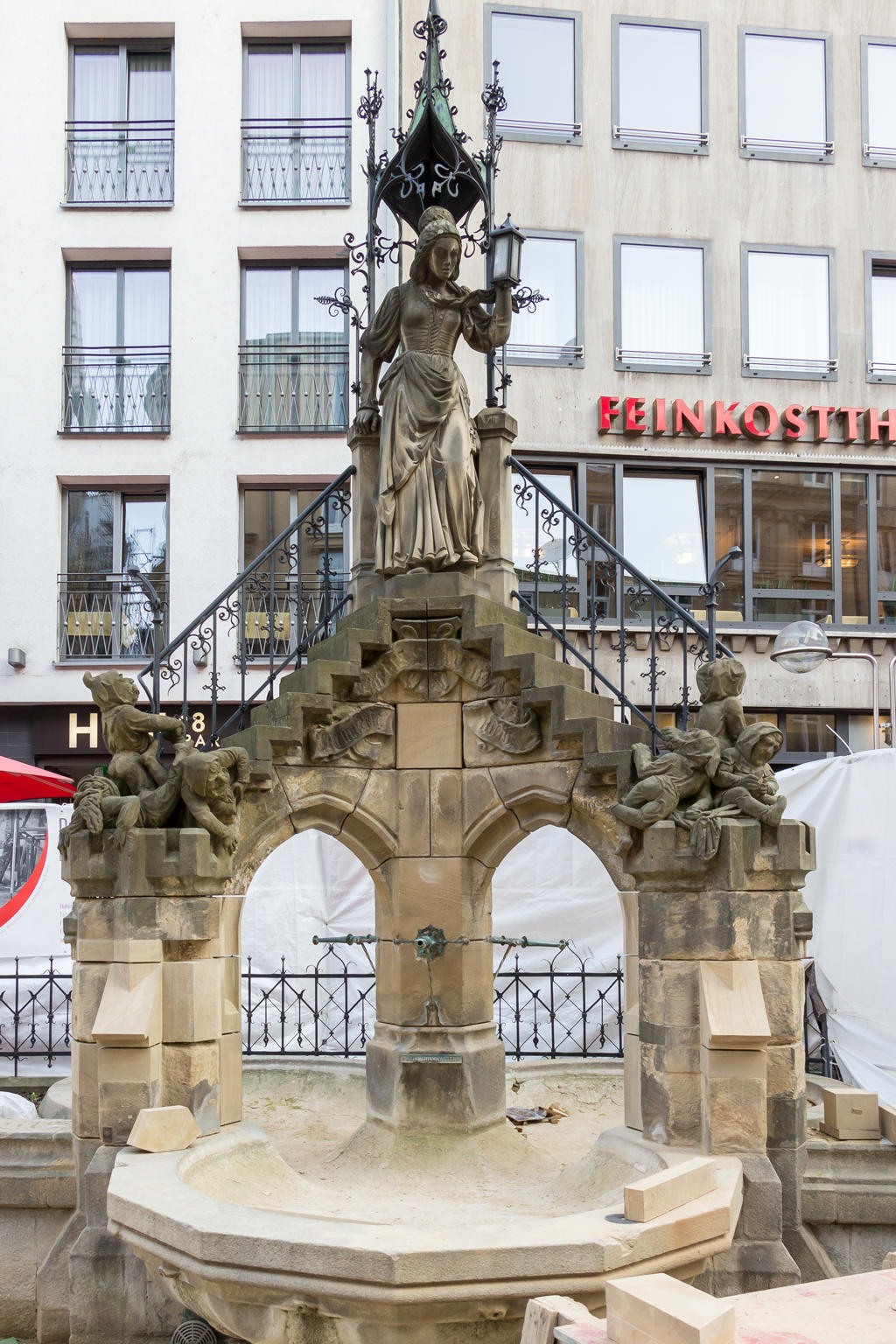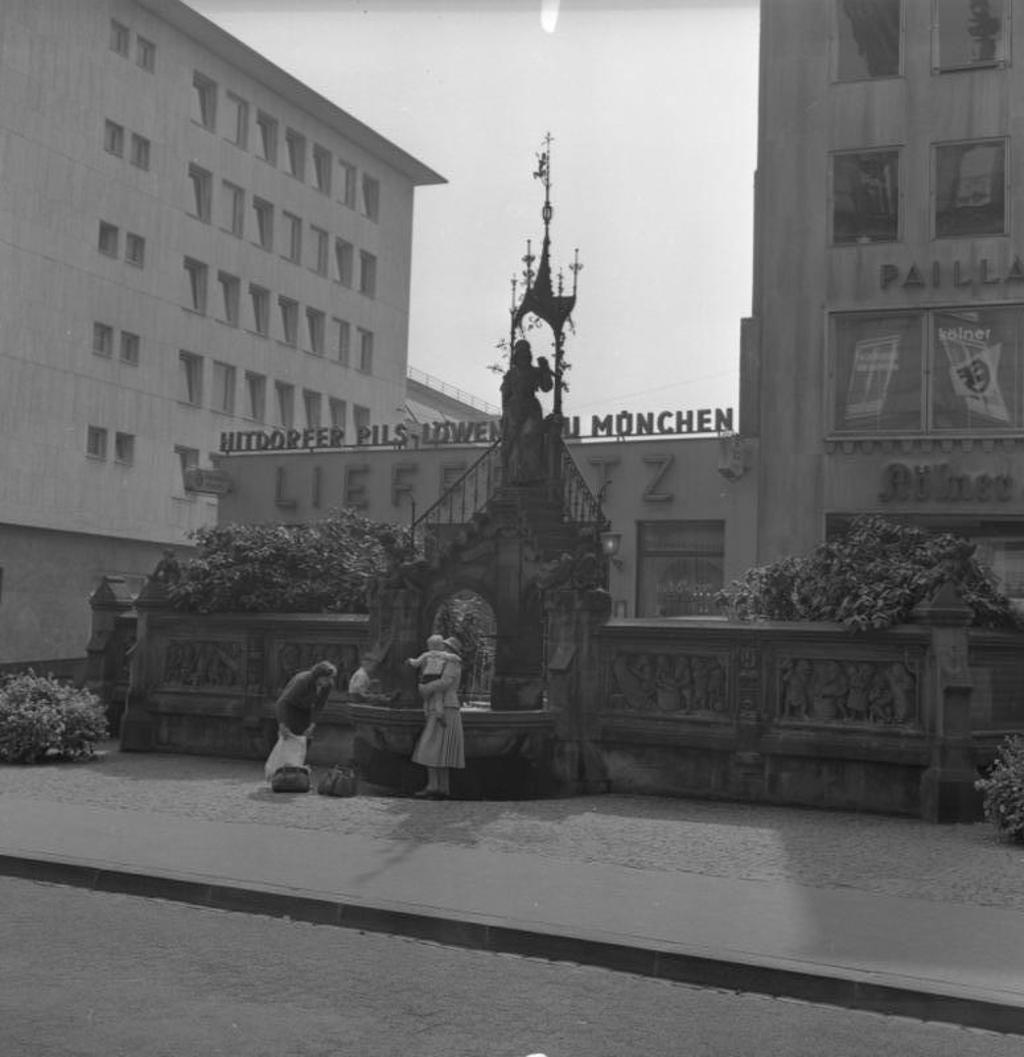About Heinzelmännchenbrunnen
The Heinzelmännchen Fountain, nestled in the bustling area of Am Hof in Cologne, immediately draws attention with its whimsical depiction of the legendary Heinzelmännchen, the helpful little gnomes of Cologne folklore. The fountain is a lively tableau of these tiny figures, each engaged in various tasks, from baking to tailoring, capturing the imagination with their industriousness. The fountain’s design, crafted by sculptor Edmund Renard in 1899, is a celebration of local legend, where these gnomes were said to assist the townspeople by completing their work overnight, allowing them to wake to a city magically transformed.
This charming fountain is not just a piece of art but a narrative in stone and water, reflecting the cultural heritage of Cologne. The Heinzelmännchen legend, immortalized in the 19th-century poem by August Kopisch, tells of how these helpful creatures vanished forever when a curious housewife scattered peas on the floor to catch a glimpse of them, causing them to trip and flee. The fountain captures this moment of bustling activity, a snapshot of the gnomes’ industrious life before their sudden departure, and serves as a reminder of the city’s rich storytelling tradition.
Right Where It Began
The fountain stands as a tribute to the Heinzelmännchen legend, deeply rooted in Cologne’s history. The story of these gnomes is said to have originated in the Middle Ages, a time when the city was a thriving hub of trade and craftsmanship. The legend reflects the aspirations and dreams of the townspeople, who imagined a world where their burdens were lightened by unseen helpers. This fountain, therefore, is not just a decorative piece but a connection to the past, a physical manifestation of the tales passed down through generations.
Plan your perfect trip to Cologne with Travo! Download now and start exploring.
Marks of Time
The intricate carvings on the fountain reveal the passage of time and the enduring nature of folklore. Each figure, with its distinct expression and activity, tells a story of the daily life and trades of old Cologne. The wear on the stone, softened by years of weather and touch, adds a layer of authenticity, as if the gnomes themselves have been at work here for centuries. The fountain’s presence in the heart of the city underscores its role as a keeper of history, where the past is etched into its very surface.
Stories in Stone
The Heinzelmännchen Fountain is a narrative carved in stone, each figure a character in the larger story of Cologne’s folklore. The gnomes, depicted in various trades, reflect the city’s historical reliance on skilled craftsmanship. From the baker with his loaves to the tailor with his needle, these figures are a testament to the industrious spirit of the city’s ancestors. The fountain invites viewers to pause and imagine the bustling life of medieval Cologne, where the line between myth and reality blurred in the glow of candlelight.
Details That Speak
Close inspection of the fountain reveals details that bring the legend to life. The expressions on the gnomes’ faces, ranging from concentration to mischief, capture the essence of their mythical nature. The tools and objects they hold are meticulously crafted, each one a nod to the trades that built the city. The flowing water adds a dynamic element, suggesting the continuous, unseen work of the Heinzelmännchen, a perpetual motion that mirrors the city’s own vibrant energy.
Living History
Today, the Heinzelmännchen Fountain is more than a historical artifact; it is a living part of Cologne’s cultural landscape. Locals and tourists alike gather around it, drawn by the charm of the gnomes and the story they tell. The fountain serves as a meeting point, a place where stories are shared and retold, keeping the legend alive in the modern world. It stands as a testament to the enduring power of folklore, a reminder that the stories of the past continue to shape the identity of the present.


